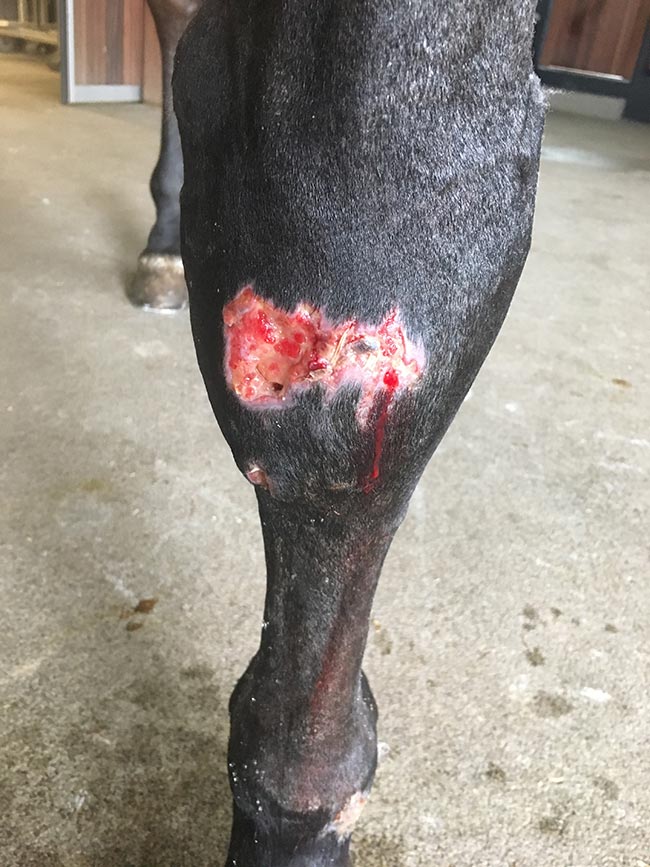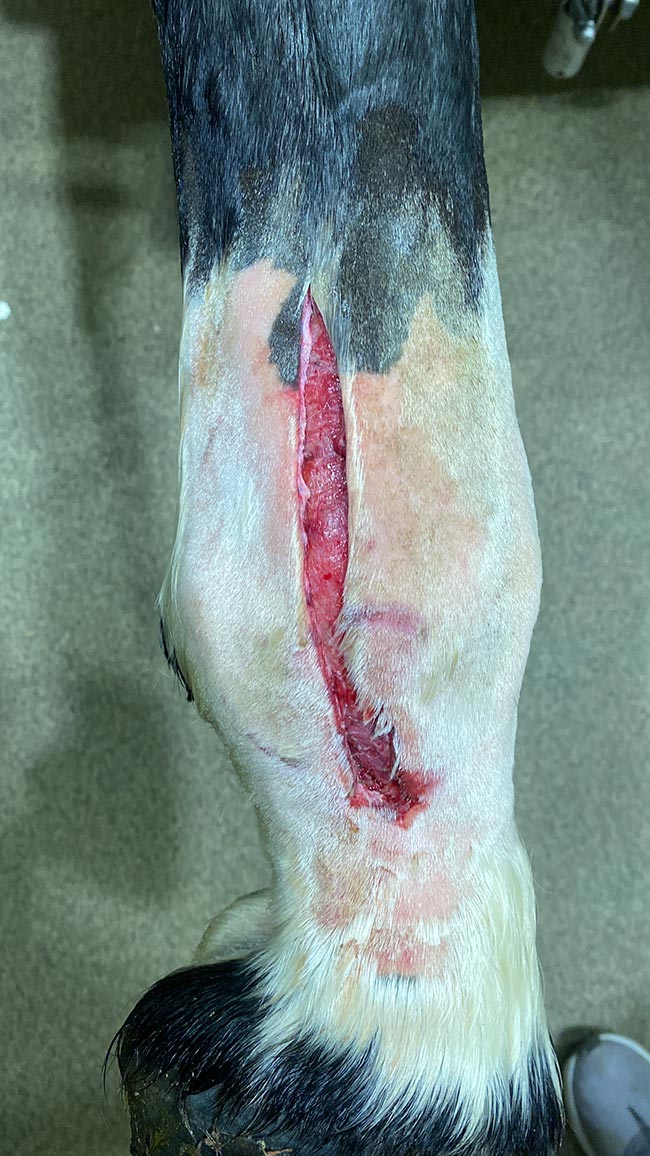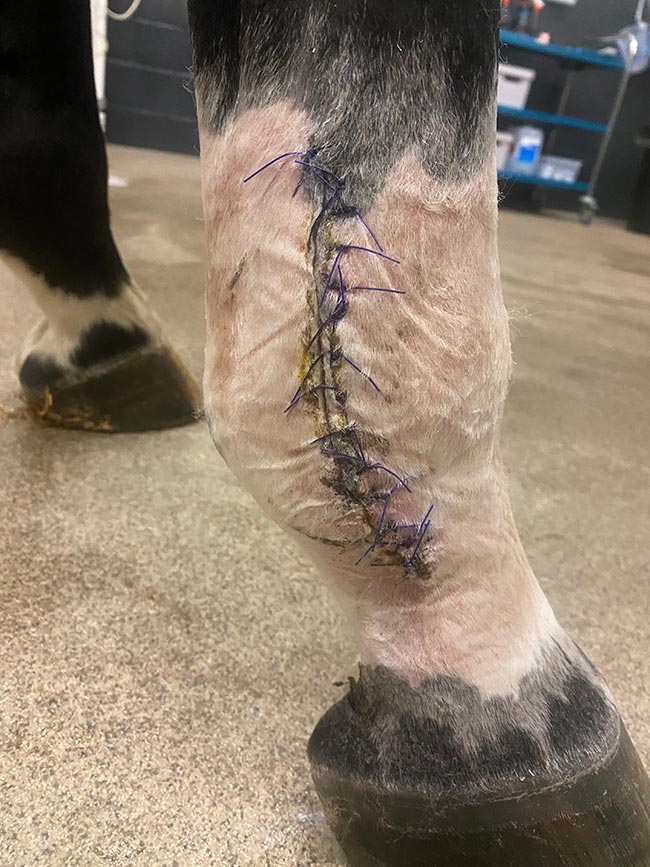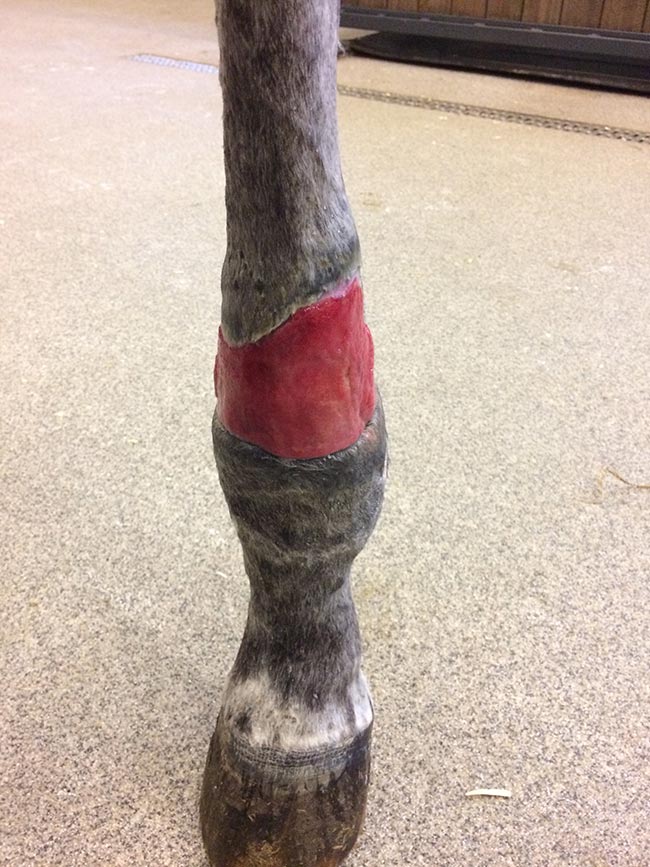By Dimitri Kadic DVM DACVS-LA DECVS
Photography: Courtesy Equitom
Most often, injuries are the result of a horse’s panic or flight reaction. Due to their primal instinct as flight animals, horses run away from approaching danger. During a fright reaction they run in panic against fences and other objects or vehicles with sometimes catastrophic consequences.
As veterinarians, we are faced with injuries ranging from simple, superficial cuts to serious deep injuries in which blood vessels, nerves, ligaments, tendons, or joints are damaged.
What is a wound?
A wound is damage to the skin and, in the horse, it is usually of traumatic origin. They can vary in depth (skin, muscle tissue, joints, tendons, bone tissue), size and location. Also, the degree of pain and infection of the tissues may vary.
Types of wounds
The injuries that we frequently encounter in our horses can be divided into five categories:
1. Cuts or incisions
These are usually caused by a sharp object. The wound edges are usually clean and regular (image 1).

Large superficial laceration at the level of the shoulder in a horse.
2. Abrasions
A friction between the skin and an object is the cause of these wounds. The top layer of skin is abraded. Also wounds as a result of friction of a material (halter or nylon fencing tape) against the skin can be categorized in this group (image 2).

Severe abrasion at the dorsal aspect of the carpus of a horse. The horse jumped the fence and landed on the concrete. Such wounds heal extremely slowly.
3. Deep wounds or lacerations
These are injuries involving the deeper tissues and are usually caused by barbed wire, corrugated iron, etc. These wounds are often severely contaminated/ infected (image 3).

Very bad and deep wounds at the level of the chest and both front limbs after the horse got tangled in barbed wire.
4. Stab wounds
Stab wounds are usually caused by a penetrating object (e.g., nail). These wounds are therefore small on the outside but can deeply penetrate and puncture important structures such as a tendon sheath or a joint cavity, resulting in infection of these structures (image 4).

Puncture wound on the back of the right hock
5. Contusions or bruises
Injuries to under-lying tissues where the skin itself is still intact. They are usually caused by external trauma such as a blow from another horse.
Types of wound healing
1. ‘Per Primam’ healing (image 5)
This means that wound healing occurs thanks to the perfect apposition of the wound edges using sutures or staples. If possible, this type of wound healing is always preferred. It reduces the chance of external contami-nation and wound healing occurs very fast. The aesthetic and functional result is also optimal as only a minimal amount of inferior scar tissue must be formed.


Deep wound on the lateral aspect of the distal aspect of the canon bone/fetlock. The horse underwent surgery to clean up this wound and to suture it for a per primam healing.
2. ‘Per secundam healing’ (image 6)

A severe circular wound with a lot of
tissue loss at the level of the hind limb. The wound could not be sutured and must heal per secundam.
If a wound cannot be sutured, it will have to close by itself. Healing in this case will be much slower and may be accompanied by more scar tissue formation. Most wounds can be fully sutured if prompt and expert intervention is taken. Some wounds, however, can only be closed partially or not at all because of severe tissue loss. Other wounds are too badly infected and consequently must heal per secundam. The treatment of these wounds will be adapted regarding the course of wound healing... To read the complete article you need to be a subscriber
CLICK HERE TO SUBSCRIBE TO BREEDING NEWS
SUBSCRIBERS CAN READ THE COMPLETE ARTICLE BY LOGGING IN AND RETURNING TO THIS PAGE




